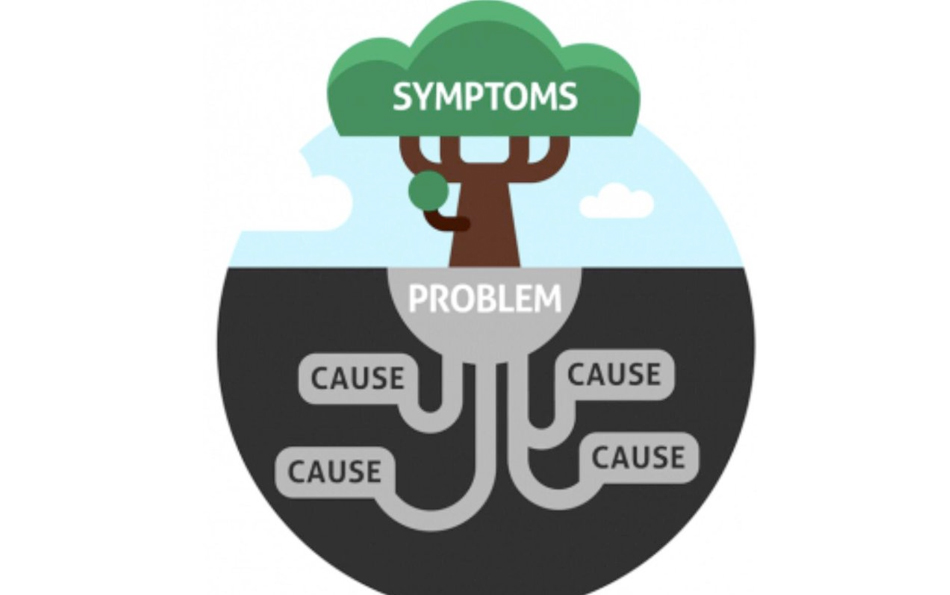#181
Introduction
In the fast-paced realm of organizational change and improvement, there exists a chasm that often perplexes even the most seasoned leaders and professionals—the knowing-doing gap when implementing change initiatives. This disparity between knowing what needs to be done and actually executing those actions is not merely a theoretical concept; it is a tangible challenge that plagues organizations across industries worldwide.
Defining the Knowing-Doing Gap
At its core, the knowing-doing gap in implementing change management, represents the disconcerting phenomenon where organizations possess the knowledge, expertise, and even the best intentions to enact change and implement initiatives, yet falter when it comes to translating that knowledge into tangible action. It’s akin to having a meticulously drawn map but hesitating to embark on the journey it outlines.
Prevalence Across Organizations and Industries
This gap isn’t confined to a specific sector or size of organization; rather, it pervades the corporate landscape with unwavering persistence. From multinational conglomerates to small startups, from manufacturing plants to tech firms, the knowing-doing gap manifests in various forms, hindering progress and stifling potential.
Consider a scenario where a company invests substantial resources in developing cutting-edge Environmental, Health, and Safety (EHS) change initiatives. They conduct extensive research, craft comprehensive strategies, and disseminate knowledge throughout the organization. However, when it comes time to implement these initiatives on the ground, inertia sets in, and progress stalls. Despite possessing the know-how and acknowledging the importance of these initiatives, the organization struggles to bridge the gap between knowledge and action.
Setting the Stage for Exploration
In delving deeper into the knowing-doing gap within the context of organizational change initiatives, it becomes imperative to uncover the underlying causes fueling this disconnect. By dissecting these causes and understanding their intricacies, organizations can chart a course toward effective remedies and transformative change.
Exploring Causes and Potential Remedies
Throughout this exploration, we’ll navigate through the labyrinth of factors contributing to the knowing-doing gap. From issues of communication breakdowns and resistance to change to deficiencies in resource allocation and leadership shortcomings, each aspect sheds light on the multifaceted nature of this challenge. Furthermore, we’ll embark on a journey toward solutions, uncovering actionable strategies and best practices designed to bridge this divide. By addressing the root causes head-on and embracing proactive measures, organizations can transform their vision into reality and propel themselves toward a future of sustained success and impact.
+++

The Term:-
The term “knowing-doing gap” was introduced by Jeffrey Pfeffer and Robert I. Sutton in their book titled “The Knowing-Doing Gap: How Smart Companies Turn Knowledge into Action.” Published in 2000, this seminal work explores the phenomenon where organizations struggle to translate knowledge into effective action, despite possessing the necessary expertise and understanding.
Pfeffer and Sutton’s research delves into various industries and organizations, highlighting the pervasive nature of this gap and its detrimental effects on organizational performance and success. By identifying common pitfalls and barriers to action, they provide valuable insights into overcoming this challenge and driving meaningful change. Their work serves as a foundational framework for understanding and addressing the knowing-doing gap within the context of organizational change initiatives, offering invaluable guidance for leaders and practitioners striving to bridge this divide and unlock the full potential of their organizations.+++++++++
Let’s dive into this with a practical example within the realm of Environmental, Health, and Safety (EHS) initiatives:
Understanding the Knowing-Doing Gap
What it means to “know” in terms of EHS initiatives: Knowing in the context of EHS initiatives entails possessing the requisite knowledge, information, and understanding of safety protocols, regulations, and best practices relevant to a specific work environment. For instance, a manufacturing company may invest in comprehensive training programs to educate employees about hazardous materials handling procedures, emergency response protocols, and personal protective equipment (PPE) usage.
What it means to “do” in terms of EHS initiatives: Doing, on the other hand, involves actively applying that knowledge and adhering to established safety protocols in day-to-day operations. In our manufacturing example, “doing” would entail employees consistently wearing appropriate PPE, following safety procedures when handling hazardous materials, and promptly reporting any safety concerns or incidents.
Why there’s often a disparity between knowing what needs to be done and actually implementing it: Despite employees being well-versed in safety protocols and understanding their importance, there’s often a gap between this knowledge and its application. Let’s illustrate this with an example:
Imagine a scenario in our manufacturing plant where employees have undergone thorough training on safety procedures, including the proper use of PPE when handling chemicals. They “know” they should wear gloves, goggles, and a lab coat when working with hazardous substances. However, when it comes to actually performing their tasks on the shop floor, some employees may neglect to wear their PPE consistently.

Causes of the Knowing-Doing Gap
- Lack of clear communication and understanding of objectives:
- In our example, if the company fails to effectively communicate the importance of PPE usage and the consequences of non-compliance, employees may not fully grasp the significance of adhering to safety protocols.
- Resistance to change among employees:
- Some employees may resist wearing PPE due to discomfort or inconvenience, despite being aware of its importance. Overcoming this resistance requires effective change management strategies and ongoing communication to address concerns and encourage compliance.
- Insufficient allocation of resources (time, budget, manpower):
- If the company fails to allocate adequate resources for training programs, safety equipment, and maintenance, employees may not have access to the necessary tools and support to implement safety measures effectively.
- Ineffective leadership and management practices:
- Poor leadership can undermine the implementation of EHS initiatives by failing to set clear expectations, provide necessary support, and hold employees accountable for safety compliance.
- Inadequate training and education on EHS practices:
- If training programs are outdated, insufficient, or poorly designed, employees may lack the knowledge and skills necessary to implement safety protocols effectively.
- Organizational culture that doesn’t prioritize action:
- If safety isn’t consistently prioritized and reinforced within the organizational culture, employees may perceive safety measures as optional rather than essential, leading to inconsistent implementation.
Addressing these causes requires a multifaceted approach, including clear communication, robust training programs, effective leadership, and a culture that values safety above all else. By identifying and proactively mitigating these barriers, organizations can bridge the knowing-doing gap and create safer work environments for their employees.+++++++++
Let’s delve into the impact of the knowing-doing gap with a compelling case study:
Case Study: The Consequences of the Knowing-Doing Gap in EHS Initiatives
Increased Risk of Accidents, Incidents, and Non-Compliance: In a manufacturing company, despite having comprehensive safety protocols in place, there was a persistent gap between knowledge and action among employees. Although workers were trained on proper safety procedures, including the use of protective equipment, there was a noticeable inconsistency in adherence to these protocols on the factory floor.
As a result, the company experienced an increase in workplace accidents and incidents. Employees who failed to comply with safety measures were more susceptible to injuries, ranging from minor cuts and bruises to more severe accidents involving machinery. Moreover, the company struggled to maintain compliance with regulatory requirements, facing scrutiny from governing bodies and potential fines due to lapses in safety protocols.
Damage to Reputation and Brand Image: The rise in workplace incidents not only impacted employee safety but also tarnished the company’s reputation and brand image. News of accidents and safety violations spread quickly, causing concern among stakeholders, including customers, investors, and the general public. The company’s failure to effectively implement its EHS initiatives eroded trust and credibility, potentially leading to a loss of business opportunities and investor confidence.
Loss of Employee Morale and Trust in Management: Internally, the knowing-doing gap took a toll on employee morale and trust in management. Workers who consistently followed safety protocols felt frustrated and demoralized by their colleagues’ disregard for safety. They began to question management’s commitment to their well-being and voiced concerns about the company’s safety culture. This loss of trust and morale contributed to decreased productivity, absenteeism, and employee turnover, further exacerbating the company’s challenges.
Legal and Financial Consequences: As workplace incidents continued to occur, the company faced mounting legal and financial consequences. In addition to potential fines for non-compliance with safety regulations, the company became embroiled in lawsuits filed by injured employees seeking compensation for their injuries. Legal fees, settlements, and insurance premiums skyrocketed, placing a significant strain on the company’s finances and threatening its long-term viability.
Conclusion: This case study vividly illustrates the far-reaching impact of the knowing-doing gap in EHS initiatives. Beyond the immediate risks to employee safety, the gap poses significant challenges to organizational reputation, employee morale, and financial stability. Addressing this gap requires a concerted effort to bridge the divide between knowledge and action, prioritizing the implementation of effective safety measures and fostering a culture of accountability and compliance throughout the organization. Only by closing this gap can companies safeguard their employees, protect their reputation, and secure their future success.+++++++
Reason why Change Initiatives fail often in Organisations:- (Not only EHS but other Domain too).
Here’s a list of common reasons why change initiatives in organizations often fail:
- Resistance to Change: Employees may resist change due to fear of the unknown, loss of familiarity, or concerns about job security.
- Lack of Clear Vision and Objectives: Without a clear vision and defined objectives, change initiatives lack direction and fail to gain buy-in from stakeholders.
- Poor Communication: Inadequate communication about the reasons for change, its expected outcomes, and the role of employees in the process can lead to confusion and resistance.
- Insufficient Leadership Support: Lack of visible support and commitment from top leadership can undermine the success of change initiatives, as employees look to leaders for guidance and direction.
- Inadequate Resources: Without sufficient resources, including time, budget, and manpower, change initiatives may struggle to gain traction and achieve their intended goals.
- Resistance from Middle Management: Middle managers, who play a crucial role in implementing change, may resist or undermine initiatives due to concerns about their own authority or workload.
- Organizational Culture: A culture that is resistant to change or lacks trust and collaboration can hinder the success of change initiatives, as employees may revert to old behaviors and practices.
- Lack of Employee Involvement: Failure to involve employees in the change process, including soliciting their input and addressing their concerns, can lead to disengagement and resistance.
- Ineffective Change Management Strategies: Poorly designed change management strategies, including inadequate planning, monitoring, and evaluation, can result in implementation failures and setbacks.
- External Factors: External factors such as economic instability, regulatory changes, or market shifts can impact the success of change initiatives, making adaptation and flexibility essential for success.+++++++++++++++++++
Case Study: Successful Remedial Measures in EHS Initiatives
Company Background:
ABC Manufacturing Company, a leading player in the automotive industry, faced challenges with the implementation of its Environmental, Health, and Safety (EHS) initiatives. Despite having robust safety protocols in place, the company experienced a knowing-doing gap, leading to an increase in workplace incidents and a decline in employee morale.
Remedial Measures Implemented:
1. Leadership and Culture:
- Leading by example: The company’s top leadership recognized the importance of setting a precedent for safety behaviors. They actively participated in safety training sessions, wore PPE consistently, and emphasized the importance of safety in all communications.
- Fostering a culture of accountability: Management instilled a sense of responsibility among employees by holding them accountable for safety compliance. They introduced performance metrics tied to safety goals and regularly recognized teams and individuals who demonstrated exemplary safety practices.
2. Communication and Training:
- Clear and consistent communication: The company revamped its communication strategy to ensure that EHS goals and expectations were communicated effectively to all employees. This included regular safety briefings, posters, and digital displays highlighting key safety messages.
- Providing regular training: Recognizing the importance of ongoing education, the company invested in comprehensive training programs tailored to different job roles. These programs covered topics such as hazard identification, emergency response, and ergonomics.
3. Resource Allocation:
- Allocating adequate resources: Management prioritized EHS initiatives by allocating sufficient resources, including financial, human, and time resources. This included investing in state-of-the-art safety equipment, hiring additional safety personnel, and dedicating time for regular safety audits and inspections.
- Prioritizing EHS within budgets and plans: EHS initiatives were integrated into the company’s strategic planning process, ensuring that they received adequate funding and support. Budgets were allocated specifically for EHS projects, and progress was monitored closely to ensure alignment with organizational goals.
4. Employee Engagement:
- Involving employees in decision-making: The company adopted a participatory approach to EHS management, involving employees in the development of safety policies and procedures. Cross-functional safety committees were established to facilitate dialogue and collaboration among different departments.
- Recognizing and rewarding contributions: To incentivize safe behaviors, the company implemented a rewards program that recognized employees for their contributions to EHS initiatives. This included incentives such as bonuses, gift cards, and public recognition in company-wide meetings.
5. Continuous Improvement:
- Implementing feedback mechanisms: Management introduced feedback mechanisms, such as suggestion boxes and anonymous reporting systems, to gather input from employees regarding safety concerns and improvement opportunities. This feedback was used to identify areas for enhancement and refine existing processes.
- Iteratively improving EHS processes: The company embraced a culture of continuous improvement, regularly reviewing and updating its EHS programs based on lessons learned and best practices. This included conducting post-incident investigations, analyzing near-miss reports, and benchmarking against industry standards.
Benefits to the Company:
- Reduction in workplace incidents: By implementing these remedial measures, ABC Manufacturing Company witnessed a significant decrease in workplace incidents and injuries. This not only improved employee safety but also reduced downtime and associated costs.
- Enhanced reputation: The company’s commitment to EHS excellence bolstered its reputation as a responsible corporate citizen, attracting positive attention from customers, investors, and regulatory bodies.
- Improved employee morale: Employees felt empowered and valued as active participants in the company’s safety culture. This led to higher levels of engagement, productivity, and job satisfaction.
- Legal and financial savings: By proactively addressing safety concerns and compliance issues, the company avoided costly fines, lawsuits, and insurance claims, resulting in substantial savings and improved financial performance.
In conclusion, the successful implementation of remedial measures not only improved safety outcomes but also yielded tangible benefits for ABC Manufacturing Company, positioning it as a leader in EHS excellence within the automotive industry
OD Initiatives that overcame the Knowing Doing Gap Inertia:-
Let’s explore two real-world examples of organizations that successfully bridged the knowing-doing gap in organizational development (OD) initiatives:
1. Google:
Background: Google, known for its innovative culture and commitment to continuous improvement, faced challenges in translating knowledge into action within its organizational development initiatives. Despite having a wealth of talent and resources, there was a need to bridge the gap between knowing what needed to be done and actually implementing effective strategies for organizational growth and development.
Strategies and Approaches:
- Data-Driven Decision Making: Google leveraged data analytics and insights to inform its organizational development initiatives. By collecting and analyzing data related to employee feedback, performance metrics, and market trends, Google was able to identify areas for improvement and tailor its strategies accordingly.
- Employee Empowerment: Google empowered its employees to take ownership of organizational development initiatives. Through initiatives like “20% time” and internal innovation challenges, employees were encouraged to pursue passion projects and drive innovation within the company, fostering a culture of creativity and experimentation.
- Continuous Learning and Development: Google invested heavily in employee training and development programs, providing resources and support for skill-building and career advancement. By prioritizing learning and development, Google ensured that employees were equipped with the knowledge and skills needed to drive organizational growth and adapt to changing market dynamics.
- Leadership Commitment: Google’s leadership demonstrated a strong commitment to organizational development, leading by example and championing initiatives that promoted a culture of innovation and collaboration. By fostering open communication and transparency, leaders at Google inspired trust and engagement among employees, facilitating the successful implementation of organizational development initiatives.
Results: Through these strategies and approaches, Google was able to bridge the knowing-doing gap in organizational development initiatives, achieving significant success in areas such as employee engagement, innovation, and market competitiveness.
2. Southwest Airlines:
Background: Southwest Airlines, a major player in the aviation industry, faced challenges in aligning its organizational development initiatives with its mission of providing exceptional customer service and operational efficiency. Despite having a strong organizational culture and customer-focused values, there was a need to bridge the gap between knowing what needed to be done and actually implementing strategies that would drive sustainable growth and success.
Strategies and Approaches:
- Employee-Centric Culture: Southwest Airlines prioritized its employees as the cornerstone of its organizational development initiatives. By fostering a culture of trust, respect, and empowerment, Southwest Airlines ensured that employees were motivated to deliver outstanding customer service and contribute to the company’s success.
- Clear Communication and Alignment: Southwest Airlines effectively communicated its organizational goals, values, and expectations to employees at all levels of the organization. By ensuring alignment between individual and organizational objectives, Southwest Airlines created a sense of purpose and direction that guided employee actions and decisions.
- Focus on Operational Excellence: Southwest Airlines implemented strategies to optimize its operations and enhance efficiency across all aspects of its business. By streamlining processes, minimizing waste, and embracing innovation, Southwest Airlines was able to deliver consistent value to customers while maintaining cost-effectiveness and profitability.
- Continuous Improvement: Southwest Airlines embraced a culture of continuous improvement, encouraging employees to identify opportunities for innovation and efficiency gains. By soliciting feedback from employees and customers, Southwest Airlines was able to implement targeted improvements that enhanced the customer experience and drove sustainable growth.
Results: Through these strategies and approaches, Southwest Airlines successfully bridged the knowing-doing gap in organizational development initiatives, achieving remarkable success in areas such as customer satisfaction, operational efficiency, and financial performance.
These examples demonstrate that by implementing effective strategies and approaches, organizations can bridge the knowing-doing gap in organizational development initiatives and achieve sustainable success in a competitive marketplace. +++++++++++++++
Conclusion: In the realm of Environmental, Health, and Safety (EHS) initiatives, as well as any other organisation development initiatives as shown above, addressing the knowing-doing gap isn’t just a matter of compliance; it’s a critical imperative for organizational success and sustainability.
Importance of Addressing the Knowing-Doing Gap Issues: Failure to bridge the knowing-doing gap in EHS / OD initiatives poses significant risks to organizations. It not only compromises employee safety, morale, but also exposes organizations to legal and financial consequences, damages their reputation, and erodes trust in management. By prioritizing action and implementation, organizations can mitigate these risks and create safer, healthier work environments for their employees.
Role of Proactive Measures in Driving Meaningful Change: Proactive measures are key to bridging the knowing-doing gap and driving meaningful change in OD/ EHS initiatives. By adopting a proactive approach to general management, organizations can identify potential hazards, Risks, implement preventive measures, and empower employees to take ownership. This includes investing in training and education, fostering a culture of accountability, and leveraging technology to streamline processes.
Encouraging Organizations to Prioritize Action and Implementation in their OD/ EHS Strategies: To effectively address the knowing-doing gap, organizations must prioritize action and implementation in theirOD / EHS strategies. This requires a concerted effort to translate knowledge into tangible action, supported by clear communication, strong leadership, and adequate resource allocation. By taking proactive steps to bridge this gap, organizations can create a culture of Operational excellence that not only protects their employees but also drives long-term success and sustainability.
Good luck.
Karthik
12th May 2024 12Noon.








 In this blog post, inspired by Tod Conklin’s insights, we’ll explore how we can keep ourselves alive and thriving while tackling the challenges of critical operations. From asking the right questions before starting work to fostering a culture of safety that empowers every individual on the team, we’ll uncover practical strategies for minimizing risks and maximizing safety.
In this blog post, inspired by Tod Conklin’s insights, we’ll explore how we can keep ourselves alive and thriving while tackling the challenges of critical operations. From asking the right questions before starting work to fostering a culture of safety that empowers every individual on the team, we’ll uncover practical strategies for minimizing risks and maximizing safety.


 Coaching Process:-
Coaching Process:-



 For instance, in the context of workplace dynamics, let’s say there’s a persistent lack of trust among team members. It’s easy to focus solely on addressing incidents that erode trust, such as missed deadlines or communication breakdowns. However, without understanding the underlying causes – perhaps stemming from unclear roles, unresolved conflicts, or ineffective leadership – these incidents will continue to occur, perpetuating the cycle of mistrust.
For instance, in the context of workplace dynamics, let’s say there’s a persistent lack of trust among team members. It’s easy to focus solely on addressing incidents that erode trust, such as missed deadlines or communication breakdowns. However, without understanding the underlying causes – perhaps stemming from unclear roles, unresolved conflicts, or ineffective leadership – these incidents will continue to occur, perpetuating the cycle of mistrust.



